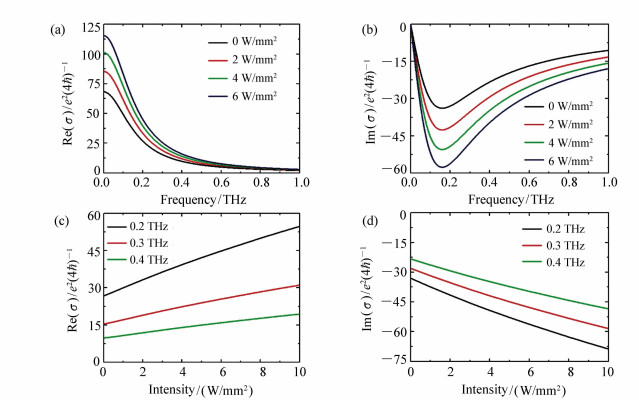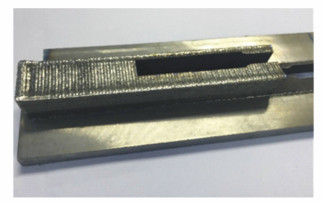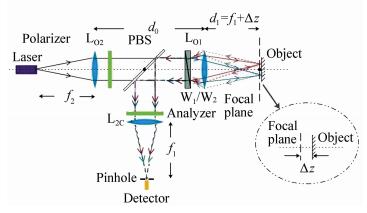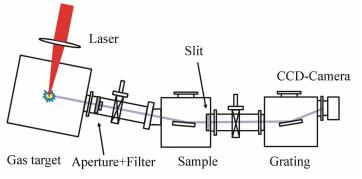2018 Vol. 11, No. 2
2018, 11(2): 153-165.
doi: 10.3788/CO.20181102.0153
Abstract:
The deep-sea optical imaging system is divided into four subsystems:illumination system, camera system, image processing system and data storage and transmission system. On the basis of above, a systematic study and development trend analysis of deep-sea optical imaging is conducted in this paper. Then, the two sub-systems of the forefront of deep-sea optical imaging, illumination system and camera system, are described in detail. Among them, the deep-sea illumination system is further subdivided into three smaller systems:light source system, light distribution system and lamp array system; and for the deep-sea camera system, according to its application areas and technical characteristics, it can be subdivided into 6 categories, namely, normal imaging, laser imaging, polarized light imaging, 3D/panoramic imaging, microscopic imaging and spectral imaging. Based on the history and current situation of deep-sea optical imaging both at home and abroad in recent years, its future development trend can be summarized as follows:higher resolution, deeper working depth, larger observation range and more diverse imaging method.
The deep-sea optical imaging system is divided into four subsystems:illumination system, camera system, image processing system and data storage and transmission system. On the basis of above, a systematic study and development trend analysis of deep-sea optical imaging is conducted in this paper. Then, the two sub-systems of the forefront of deep-sea optical imaging, illumination system and camera system, are described in detail. Among them, the deep-sea illumination system is further subdivided into three smaller systems:light source system, light distribution system and lamp array system; and for the deep-sea camera system, according to its application areas and technical characteristics, it can be subdivided into 6 categories, namely, normal imaging, laser imaging, polarized light imaging, 3D/panoramic imaging, microscopic imaging and spectral imaging. Based on the history and current situation of deep-sea optical imaging both at home and abroad in recent years, its future development trend can be summarized as follows:higher resolution, deeper working depth, larger observation range and more diverse imaging method.
2018, 11(2): 166-173.
doi: 10.3788/CO.20181102.0166
Abstract:
This paper proposes an optically controlled terahertz switcher based on cross-shaped metal resonators metasurface covered by monolayer graphene. The spectral characteristics of proposed composite structure were calculated using the surface conductivity model of graphene and the finite element method. The modeling demonstrated the appearance of a narrowband resonant dip in the transmission spectrum with a modulation depth of 36.8% and a Q-factor of 250 after the optical pump intensity achieving to 0.2 W/mm2. In addition, the modulation depth of such a dip can be slightly tuned by varying value of the pump intensity. Thus, the design of the optically tunable terahertz switcher may contribute to the development of functional components for terahertz communication applications.
This paper proposes an optically controlled terahertz switcher based on cross-shaped metal resonators metasurface covered by monolayer graphene. The spectral characteristics of proposed composite structure were calculated using the surface conductivity model of graphene and the finite element method. The modeling demonstrated the appearance of a narrowband resonant dip in the transmission spectrum with a modulation depth of 36.8% and a Q-factor of 250 after the optical pump intensity achieving to 0.2 W/mm2. In addition, the modulation depth of such a dip can be slightly tuned by varying value of the pump intensity. Thus, the design of the optically tunable terahertz switcher may contribute to the development of functional components for terahertz communication applications.
2018, 11(2): 174-181.
doi: 10.3788/CO.20181102.0174
Abstract:
Aiming at problems of vehicle type recognition in high-speed environment, an improved HOG algorithm based on oriented steerable filter is proposed in this paper. Vehicle image features are extracted by combining the oriented steerable filter algorithm and HOG algorithm. The principle component analysis(PCA) is used to reduce dimensions of the eigenvector for decreasing the computational complexity. The support vector machine(SVM) algorithm is used to train the extracted features to realize the recognition of vehicle's appearance features. The simulation results indicate that average vehicle type recognition accurate of proposed algorithm reaches 92.36%. At the same time, the recognition speed is 3.45% higher than the traditional HOG feature algorithm. In conclusion, the proposed algorithm can effectively improve the efficiency of vehicle type recognition and is therefore better than the traditional HOG algorithm.
Aiming at problems of vehicle type recognition in high-speed environment, an improved HOG algorithm based on oriented steerable filter is proposed in this paper. Vehicle image features are extracted by combining the oriented steerable filter algorithm and HOG algorithm. The principle component analysis(PCA) is used to reduce dimensions of the eigenvector for decreasing the computational complexity. The support vector machine(SVM) algorithm is used to train the extracted features to realize the recognition of vehicle's appearance features. The simulation results indicate that average vehicle type recognition accurate of proposed algorithm reaches 92.36%. At the same time, the recognition speed is 3.45% higher than the traditional HOG feature algorithm. In conclusion, the proposed algorithm can effectively improve the efficiency of vehicle type recognition and is therefore better than the traditional HOG algorithm.
2018, 11(2): 182-189.
doi: 10.3788/CO.20181102.0182
Abstract:
Non-invasive blood glucose sensing is still actual scientific task for more safe and comfort diabetes care. This article shows correlation between blood optical properties and its glucose concentration. The transmission spectra of whole blood have been studied by the time-domain THz spectroscopy in the frequency range from 0.3 to 0.5 THz. Biosamples were produced from the same person with the diabetes mellitus during a short time period after the insulin injection have been used. Frequency dispersions of blood optical properties are obtained. Based on frequency dispersions, the dependences of blood glucose concentrations with the refractive index and permittivity are presented. This work is a part of the complex investigation, which focuses on the development of a non-invasive glucose measuring technique. Registering dependences between blood glucose level and blood optical parameters allows for using the reflective spectroscopy techniques in future for non-invasive blood glucose level sensing.
Non-invasive blood glucose sensing is still actual scientific task for more safe and comfort diabetes care. This article shows correlation between blood optical properties and its glucose concentration. The transmission spectra of whole blood have been studied by the time-domain THz spectroscopy in the frequency range from 0.3 to 0.5 THz. Biosamples were produced from the same person with the diabetes mellitus during a short time period after the insulin injection have been used. Frequency dispersions of blood optical properties are obtained. Based on frequency dispersions, the dependences of blood glucose concentrations with the refractive index and permittivity are presented. This work is a part of the complex investigation, which focuses on the development of a non-invasive glucose measuring technique. Registering dependences between blood glucose level and blood optical parameters allows for using the reflective spectroscopy techniques in future for non-invasive blood glucose level sensing.
2018, 11(2): 190-197.
doi: 10.3788/CO.20181102.0190
Abstract:
Vertical-cavity surface-emitting lasers(VCSELs) are widely used in short-reached optical interconnects and data communication links because of their low energy consumption and high modulation speed. Capacitance, as the parasitic parameters, affects the modulation bandwidth. In this paper, parasitic capacitance of VCSELs is reduced by using a low-k benzocyclobutene(BCB) planarization technique. The detail BCB planarization technique has been discussed with optimal process parameters, which is useful for high-speed VCSEL fabrication. The small signal modulation bandwidth of the low-k BCB planarization VCSEL with 7 μm oxide aperture has been achieved to 15.2 GHz.
Vertical-cavity surface-emitting lasers(VCSELs) are widely used in short-reached optical interconnects and data communication links because of their low energy consumption and high modulation speed. Capacitance, as the parasitic parameters, affects the modulation bandwidth. In this paper, parasitic capacitance of VCSELs is reduced by using a low-k benzocyclobutene(BCB) planarization technique. The detail BCB planarization technique has been discussed with optimal process parameters, which is useful for high-speed VCSEL fabrication. The small signal modulation bandwidth of the low-k BCB planarization VCSEL with 7 μm oxide aperture has been achieved to 15.2 GHz.
2018, 11(2): 198-205.
doi: 10.3788/CO.20181102.0198
Abstract:
In recent years, laser additive manufacturing(also called 3D printing) has become the focus of scientific research and industrial applications. In order to study the impact of laser shock peening(LSP) on the properties of laser additive manufactured Ti-6Al-4V alloy, a TC4 titanium alloy prepared by 3D printing was carried out LSP by using Nd:YAG laser with energy of 5 J, wavelength of 1 064 nm, pulse width of 10 ns and spot diameter of 3 mm, and the micro-hardness, microstructure, residual stress and high temperature oxidation performance of the material before and after LSP were analyzed. The results show that by comparing with the TC4 titanium alloy before LSP, the micro-hardness of that after LSP increases by 8%, and the depth of the impact layer reaches 0.4 mm, the grains in the strengthened region are refined, the dislocation is increased and the deformation twins are produced. The residual compressive stress of laser shock peening is as high as 472 MPa, and the high temperature oxidation resistance of the material is also improved.
In recent years, laser additive manufacturing(also called 3D printing) has become the focus of scientific research and industrial applications. In order to study the impact of laser shock peening(LSP) on the properties of laser additive manufactured Ti-6Al-4V alloy, a TC4 titanium alloy prepared by 3D printing was carried out LSP by using Nd:YAG laser with energy of 5 J, wavelength of 1 064 nm, pulse width of 10 ns and spot diameter of 3 mm, and the micro-hardness, microstructure, residual stress and high temperature oxidation performance of the material before and after LSP were analyzed. The results show that by comparing with the TC4 titanium alloy before LSP, the micro-hardness of that after LSP increases by 8%, and the depth of the impact layer reaches 0.4 mm, the grains in the strengthened region are refined, the dislocation is increased and the deformation twins are produced. The residual compressive stress of laser shock peening is as high as 472 MPa, and the high temperature oxidation resistance of the material is also improved.
2018, 11(2): 206-211.
doi: 10.3788/CO.20181102.0206
Abstract:
To study the uniformity of the absorption light field of the side-pumped Nd:YAG crystal in the LD planar arrays, a new calculation method for solving the pump optical path is proposed in this paper. Firstly, we establish a distribution model of crystal absorption light field suitable for laser diode multi-side-pumped all-solid-state laser with different pump structures; Then, the influence of the parameters of unidirectional planar array pump structure, including number of bars, the interval of bars, inclination of bars surface, on the uniformity and pumping efficiency of absorption light field in planar array pumped crystals are simulated and analyzed. This study provides a theoretical basis for the design and research of LD side-pumped all-solid-state laser.
To study the uniformity of the absorption light field of the side-pumped Nd:YAG crystal in the LD planar arrays, a new calculation method for solving the pump optical path is proposed in this paper. Firstly, we establish a distribution model of crystal absorption light field suitable for laser diode multi-side-pumped all-solid-state laser with different pump structures; Then, the influence of the parameters of unidirectional planar array pump structure, including number of bars, the interval of bars, inclination of bars surface, on the uniformity and pumping efficiency of absorption light field in planar array pumped crystals are simulated and analyzed. This study provides a theoretical basis for the design and research of LD side-pumped all-solid-state laser.
2018, 11(2): 212-218.
doi: 10.3788/CO.20181102.0212
Abstract:
In order to solve the problems such as the deficiency of positioning and pointing accuracy, large chromatic aberration, insufficient resolution and energy utilization efficiency, a high-resolution large aperture achromatic UV optical system is designed. First, based on the application requirements of corona discharge detection, the overall design requirements of UV optical system are proposed. Then, using the different dispersion characteristics of both fused silica and calcium fluoride, a large aperture achromatic UV optical system is designed according to the improved double-cemented lens structure, and the tolerance analysis of the system is carried out. The results show that the ultraviolet optical system designed in this paper has a dot-matrix root mean square diameter less than 0.08 mm and a resolution of 20 lp/mm within the full field of view, which meets the requirements of the power industry for corona detection.
In order to solve the problems such as the deficiency of positioning and pointing accuracy, large chromatic aberration, insufficient resolution and energy utilization efficiency, a high-resolution large aperture achromatic UV optical system is designed. First, based on the application requirements of corona discharge detection, the overall design requirements of UV optical system are proposed. Then, using the different dispersion characteristics of both fused silica and calcium fluoride, a large aperture achromatic UV optical system is designed according to the improved double-cemented lens structure, and the tolerance analysis of the system is carried out. The results show that the ultraviolet optical system designed in this paper has a dot-matrix root mean square diameter less than 0.08 mm and a resolution of 20 lp/mm within the full field of view, which meets the requirements of the power industry for corona detection.
2018, 11(2): 219-230.
doi: 10.3788/CO.20181102.0219
Abstract:
In order to observe the solar spectrum between 170 nm to 380 nm precisely, an ultraviolet double grating spectrometer with its wavelength repeatability accuracy better than ±0.02 nm has been designed. A wavelength scanning mechanism is the key module of the ultraviolet double grating spectrometer. Mechanical parameters are derived from optical parameters according to the grating dispersion principle. Error sources which influence the spectrometer wavelength repeatability error have been analyzed. According to the analysis results, the repeatability error of the lead screw is the main error source. A wavelength scanning mechanism has been assembled with a ±2 μm accuracy lead screw, and the spectrometer mechanism structure has been designed. Experiments have been carried out with a mercury lamp as light source to verify wavelength repeatability. The experiment results show that the wavelength repeatability of the spectrometer is between -0.005 nm and +0.007 nm, which is better than the required accuracy of ±0.02 nm.
In order to observe the solar spectrum between 170 nm to 380 nm precisely, an ultraviolet double grating spectrometer with its wavelength repeatability accuracy better than ±0.02 nm has been designed. A wavelength scanning mechanism is the key module of the ultraviolet double grating spectrometer. Mechanical parameters are derived from optical parameters according to the grating dispersion principle. Error sources which influence the spectrometer wavelength repeatability error have been analyzed. According to the analysis results, the repeatability error of the lead screw is the main error source. A wavelength scanning mechanism has been assembled with a ±2 μm accuracy lead screw, and the spectrometer mechanism structure has been designed. Experiments have been carried out with a mercury lamp as light source to verify wavelength repeatability. The experiment results show that the wavelength repeatability of the spectrometer is between -0.005 nm and +0.007 nm, which is better than the required accuracy of ±0.02 nm.
2018, 11(2): 231-236.
doi: 10.3788/CO.20181102.0231
Abstract:
In order to suppress the influence of sun flare on the detection of sea surface targets in real time, a set of polarization adaptive filtering detection system is designed and constructed based on the polarization optical theory. In this paper, the function and composition of the polarization detection system, the principle of polarization detection and background suppression are introduced, then the optical design results of the system are given. By using the adaptive polarization filter detection system and carrying the telescope tracking test platform, relevant polarization verification experiments are carried out for the typical target at sea. The experimental results show that due to there is a significant polarization characteristic of the sun flare on the sea surface, the detector can easily get saturated with the conventional detection method. However, the proposed polarization detection technique can effectively suppress the influence of the solar flare and detect the target.
In order to suppress the influence of sun flare on the detection of sea surface targets in real time, a set of polarization adaptive filtering detection system is designed and constructed based on the polarization optical theory. In this paper, the function and composition of the polarization detection system, the principle of polarization detection and background suppression are introduced, then the optical design results of the system are given. By using the adaptive polarization filter detection system and carrying the telescope tracking test platform, relevant polarization verification experiments are carried out for the typical target at sea. The experimental results show that due to there is a significant polarization characteristic of the sun flare on the sea surface, the detector can easily get saturated with the conventional detection method. However, the proposed polarization detection technique can effectively suppress the influence of the solar flare and detect the target.
2018, 11(2): 237-247.
doi: 10.3788/CO.20181102.0237
Abstract:
To investigate the relevancy of infrared thermal imaging and tumors inside human body, the finite element model of human thigh with four-layers, including bone, muscle, fat and skin layers, is established in this paper. Based on the characteristic that temperature varies along radial direction inside the body, the heat generation rate of blood perfusion as a function of polar radius in each layer is given. By this method the nonlinear problem of temperature-dependence of the heat generation rate of blood perfusion in finite element analysis is solved. Then the temperature distributions caused by the inside tumor with different sizes and at different depths are numerically calculated by finite element analysis. It can be concluded that in the given range of tumor diameters a smaller tumor yields larger temperature increases inside the body, higher peak temperature and narrower FWHM(Full Width at Half Maximum) of the temperature distribution on the skin surface. It is also shown that with specific diameter, tumors located deeper yield higher peak temperature inside the body, and lower peak temperature and wider FWHM on the skin surface.
To investigate the relevancy of infrared thermal imaging and tumors inside human body, the finite element model of human thigh with four-layers, including bone, muscle, fat and skin layers, is established in this paper. Based on the characteristic that temperature varies along radial direction inside the body, the heat generation rate of blood perfusion as a function of polar radius in each layer is given. By this method the nonlinear problem of temperature-dependence of the heat generation rate of blood perfusion in finite element analysis is solved. Then the temperature distributions caused by the inside tumor with different sizes and at different depths are numerically calculated by finite element analysis. It can be concluded that in the given range of tumor diameters a smaller tumor yields larger temperature increases inside the body, higher peak temperature and narrower FWHM(Full Width at Half Maximum) of the temperature distribution on the skin surface. It is also shown that with specific diameter, tumors located deeper yield higher peak temperature inside the body, and lower peak temperature and wider FWHM on the skin surface.
2018, 11(2): 248-254.
doi: 10.3788/CO.20181102.0248
Abstract:
In view of the difficulty of testing the mechanical properties of smooth surface, a measuring system based on improved digital laser speckle interferometry is established. First, speckle illumination is achieved by designing a new speckle interferometer optical path. At the same time, the dynamic speckle interferograms of the smooth parts are processed using the spatial-carrier Fourier transform method. Finally, the distribution of the deformation field of the smooth surface is obtained. This method does not perform any processing on the surface to be measured, which enables high-precision full-field deformation measurement on a smooth surface. The experimental results show that the maximum deformation is at the center of the mirror plate and the maximum deformation is 1.936, 1.861 and 1.797 μm, respectively, which is close to the preset value of center deformation. The method has simple optical path, a practical measurement scheme, which can realize fast dynamic measurement of smooth surface deformation.
In view of the difficulty of testing the mechanical properties of smooth surface, a measuring system based on improved digital laser speckle interferometry is established. First, speckle illumination is achieved by designing a new speckle interferometer optical path. At the same time, the dynamic speckle interferograms of the smooth parts are processed using the spatial-carrier Fourier transform method. Finally, the distribution of the deformation field of the smooth surface is obtained. This method does not perform any processing on the surface to be measured, which enables high-precision full-field deformation measurement on a smooth surface. The experimental results show that the maximum deformation is at the center of the mirror plate and the maximum deformation is 1.936, 1.861 and 1.797 μm, respectively, which is close to the preset value of center deformation. The method has simple optical path, a practical measurement scheme, which can realize fast dynamic measurement of smooth surface deformation.
2018, 11(2): 255-264.
doi: 10.3788/CO.20181102.0255
Abstract:
Defects in the multilayer extreme ultraviolet lithography(EUV) mask "whiteboard" have become an important issue to restrict the development of next-generation lithography. A detection system based on differential interference contrast(DIC) confocal microscopy is proposed in order to improve the ability of distinguishing the microstructure defects on the lithography mask "whiteboard". Based on the scalar diffraction theory, the lateral and axial resolution of the system are calculated. In the condition that numerical aperture of 0.65 and working wavelength of 405 nm, resolutions of DIC confocal microscopy, traditional microscopy and the confocal microscopy system are compared and analyzed using MATLAB. The results show that the DIC confocal microscopy has the ability of lateral resolution of 230 nm and resolution of axial step height difference of 25 nm(corresponding to defects such as scratches). In addition, the effect of factors such as the size of detector and the axial deviation of the sample are also simulated and analyzed. The experimental results show that the proposed system can detect multilayer coating microstructure defects with a width of 200 nm and a height of 10 nm, which has better detection ability than the other two systems.
Defects in the multilayer extreme ultraviolet lithography(EUV) mask "whiteboard" have become an important issue to restrict the development of next-generation lithography. A detection system based on differential interference contrast(DIC) confocal microscopy is proposed in order to improve the ability of distinguishing the microstructure defects on the lithography mask "whiteboard". Based on the scalar diffraction theory, the lateral and axial resolution of the system are calculated. In the condition that numerical aperture of 0.65 and working wavelength of 405 nm, resolutions of DIC confocal microscopy, traditional microscopy and the confocal microscopy system are compared and analyzed using MATLAB. The results show that the DIC confocal microscopy has the ability of lateral resolution of 230 nm and resolution of axial step height difference of 25 nm(corresponding to defects such as scratches). In addition, the effect of factors such as the size of detector and the axial deviation of the sample are also simulated and analyzed. The experimental results show that the proposed system can detect multilayer coating microstructure defects with a width of 200 nm and a height of 10 nm, which has better detection ability than the other two systems.
2018, 11(2): 265-278.
doi: 10.3788/CO.20181102.0265
Abstract:
Near edge X-ray absorption fine structure(NEXAFS) spectrum contains the local structure information of the absorbing atoms. Due to its wide range of applications and high sensitivity, it has become an important method to study the structure of materials. In order to study the NEXAFS spectrum of carbon in organic substances, a design of a compact spectrometer under grazing incidence conditions is presented, based on a laser-produced plasma source using a gas target. An aberration corrected flat-field grating and a CCD camera are used to detect the spectrum. To achieve the high precision adjustment of the incident angle of the grating, an optimized scheme where the incident angle is 88.6° has been given. Using ray tracing, the resolution of the spectrometer is analyzed. It is about 666 at 4.4 nm in the wavelength range of 2-5 nm. From the influence of each parameter error on the image width, it is found that the error of the incident angle is the most sensitive, and using the optimized assembly scheme is able to achieve the high accuracy adjustment of the incident angle. The performance of the spectrometer has been tested using the nitrogen plasma spectrum, and the results show that the resolution reaches the design index.
Near edge X-ray absorption fine structure(NEXAFS) spectrum contains the local structure information of the absorbing atoms. Due to its wide range of applications and high sensitivity, it has become an important method to study the structure of materials. In order to study the NEXAFS spectrum of carbon in organic substances, a design of a compact spectrometer under grazing incidence conditions is presented, based on a laser-produced plasma source using a gas target. An aberration corrected flat-field grating and a CCD camera are used to detect the spectrum. To achieve the high precision adjustment of the incident angle of the grating, an optimized scheme where the incident angle is 88.6° has been given. Using ray tracing, the resolution of the spectrometer is analyzed. It is about 666 at 4.4 nm in the wavelength range of 2-5 nm. From the influence of each parameter error on the image width, it is found that the error of the incident angle is the most sensitive, and using the optimized assembly scheme is able to achieve the high accuracy adjustment of the incident angle. The performance of the spectrometer has been tested using the nitrogen plasma spectrum, and the results show that the resolution reaches the design index.


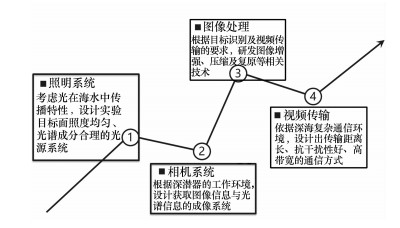
 Abstract
Abstract FullText HTML
FullText HTML PDF 5729KB
PDF 5729KB